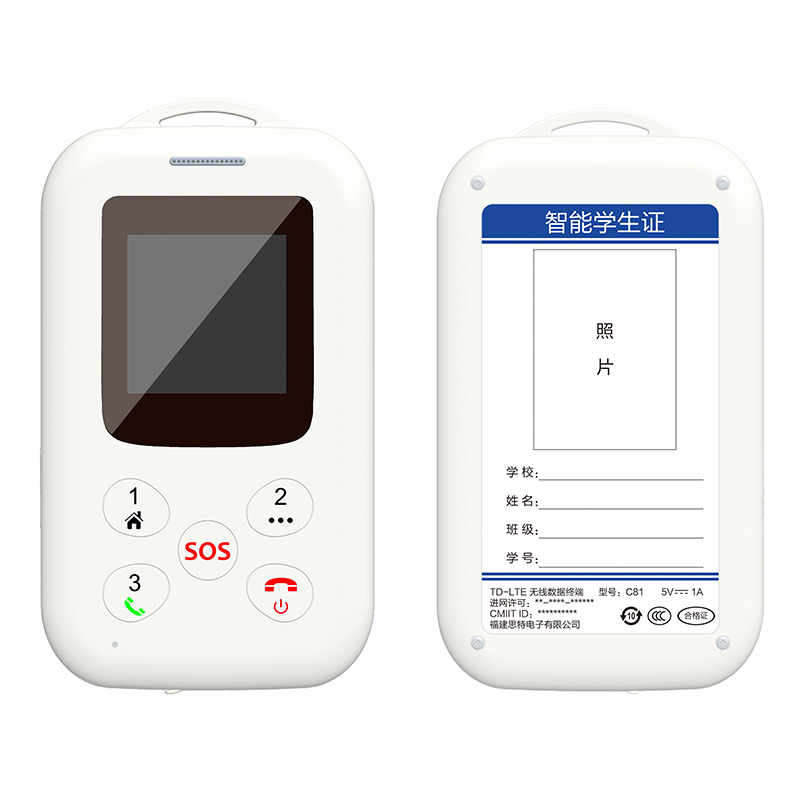How do the social functions of kids' cell phones prevent the risk of privacy leaks?
Release Time : 2025-06-11
The social function of kids' cell phone builds a convenient communication bridge for children, but it also comes with the potential risk of privacy leakage. From data transmission to function design, each link needs to be strictly controlled to ensure the social needs of children while protecting their personal information security to the greatest extent.
The data transmission mechanism of social functions is the first line of defense against privacy leakage. When kids' cell phone realizes functions such as friend chat and voice call, it needs to upload the child's voice, location and other data to the cloud for interaction. To prevent data from being stolen during transmission, manufacturers will use encryption technology to perform special encoding processing on the data. Only authorized devices and servers can restore encrypted data to original information. This is like adding a special lock to the data. Even if an unauthorized third party intercepts the data, it will only see a string of garbled characters and cannot obtain the real content, thereby preventing the child's private information from being illegally obtained.
Strict restrictions on the friend adding mechanism can effectively reduce the possibility of privacy exposure. Formal kids' cell phones will not add strangers at will like adult social software. Usually, children need to be confirmed by both parents and the other party's parents before adding friends, which is equivalent to setting an "entry threshold" for the child's social circle. Only when both parents agree can two children become friends and communicate. This mechanism prevents children from establishing contact with strangers without knowing it, and prevents people with ulterior motives from pretending to be children's peers to obtain children's private information, such as home address, school name and other sensitive content.
The content review mechanism of the social function of kids' cell phone is also crucial. The system will automatically scan the text, voice, picture and other information sent and received by children. Once it detects keywords involving privacy, such as home address, phone number, etc., it will immediately issue a warning to prevent the information from being sent or received. The system will also filter bad information such as inappropriate speech and violent content. Just like an intelligent "little housekeeper", it always guards the child's social environment to ensure that the child will not accidentally disclose privacy during communication and avoid being harmed by bad information.
The hardware protection of the watch itself is a physical barrier against privacy leakage. The shell design of kids' cell phone should not only consider comfort and beauty, but also have a certain degree of anti-cracking ability. Its internal chips and sensors are tightly sealed to prevent criminals from obtaining data by disassembling the watch. At the same time, the watch's Bluetooth, Wi-Fi and other wireless connection functions are also set with strict permission management. They will automatically shut down when not in use to avoid being connected by malicious devices nearby, thereby preventing data from being illegally read or tampered with, and adding a layer of security lock for children's privacy from the hardware level.
Parental control platforms play a leading role in preventing privacy leaks. Parents can use mobile APP to comprehensively manage the social functions of kids' cell phone, such as limiting chat time and prohibiting the addition of new friends. Parents can also check their children's chat records at any time, understand their children's social dynamics, and promptly discover potential privacy leaks. Once an abnormality is found, parents can take immediate measures, such as turning off related functions or deleting suspicious friends. This active management mode allows parents to control their children's social situation in real time and provide strong protection for their children's privacy security.
Manufacturers' management strategies for user data directly affect privacy security. Formal manufacturers will strictly abide by data protection regulations and properly store and manage the collected children's data. They will not sell or share children's data to third parties at will, and will regularly perform security inspections and maintenance on data storage systems to prevent data leaks due to system vulnerabilities. At the same time, manufacturers will also strictly manage the rights of employees. Only personnel in specific positions can access children's data when necessary, and the operation process will be recorded for traceability and supervision, building a solid safety line for children's privacy at the enterprise level.
With the development of technology and changes in the network environment, the privacy protection of the social functions of kids' cell phone needs to be continuously upgraded and improved. On the one hand, manufacturers should continue to optimize encryption technology and security protection mechanisms, and promptly repair possible security vulnerabilities; on the other hand, parents and children should also enhance their awareness of privacy protection, understand the hazards of privacy leakage, and not disclose sensitive information in social functions at will. Only through joint efforts from multiple parties and coordinated protection from multiple levels such as technology, management, and awareness can the social functions of kids' cell phone not only meet children's social needs, but also become a reliable barrier to protect children's privacy and security.







